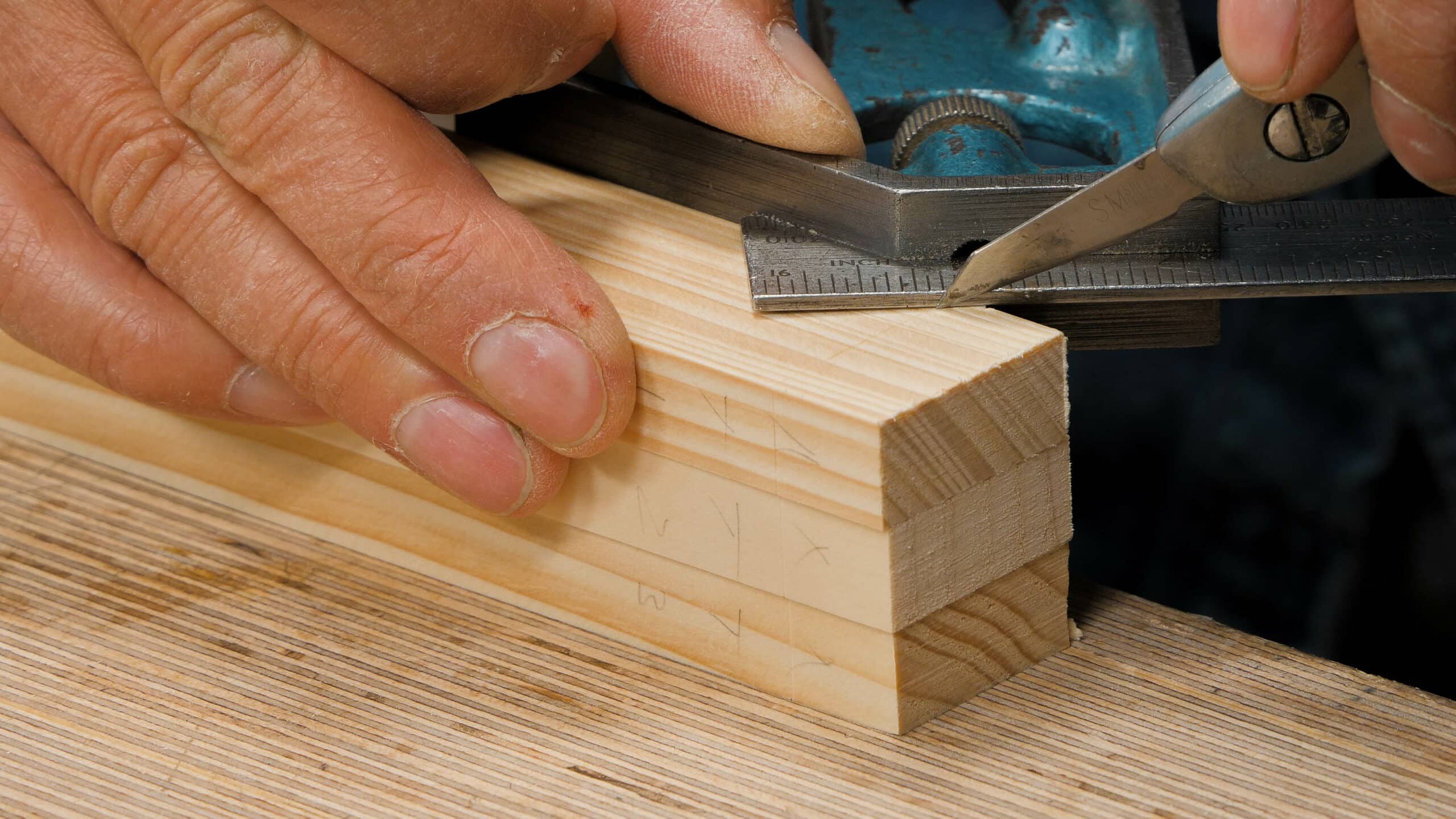Shoji Screen: Episode 3
Posted 22 July 2020
This is an episode in a paid series. Want to watch it? You just need to sign up as a paid member, and you can enjoy this video and many other videos we think you will love.
Laying out the Kumiko rails and verticals on so large a scale is not so daunting when using traditional techniques and patterns for layout. In this episode, we layout and chop the mortise holes and then create the unusual tenons with their little pointed ‘bird beak’. The method is unconventional in our western joinery world, but the technique crosses all borders and cultures where we discover for ourselves what can work effectively and efficiently. You will enjoy the whole methodology in seeing this process develop and the resulting precision achieved with common woodworking tools.
BOOKMARKS:
INSIDE FRAME LAYOUT – 0:07
LAYOUT – 2:48
TENONS – 18:59


I like the method of subtracting the sum total of the thicknesses of the interior members from the opening to calculate interior openings. Even if the members vary in thickness from hand planing this will add up correctly if each member is used once for the subsequent marks.
One trick I like to use when 45 degree chamfers must be consistent is to measure the width of the chamfer itself with calipers after planing. At 45 degrees the face of a chamfer should be the square root of two (1.414 approximately) times the chamfer size. At 1/8″, as here, that works out to 0.177″. Targeting such a number may minimise subsequent fettling.
Thank you for taking time at the start to give us context for the pieces you will be laying out and making next. It is helpful to have the visual. Before laying out, it might also be helpful to show how the joinery will look when it is ready to be assembled — especially joints we haven’t seen made before. That helps us understand better where the layout is headed. A suggestion, not a a criticism. Thanks for the consistently good, and good-natured, teaching.
Re: the mortising – with the hole drilled to start it:
You usually chisel your mortise without the drilling the hole. In this instance, was your thinking the delicacy or smallness of the joint that warranted the hole? A brief explanation of your thinking would be helpful to know when to drill out mortise and when not to. Many woodworkers drilling out mortises before applying the chisel.
Thanks for the tip on using the pitch of the snail of the auger bit to estimate depth per revolution of the brace!
I just checked and most of my auger bits are indeed about 16 threads per inch.
Dear Mr. Sellers,
i did not understand the name of the small tool you used to clean out the mortise. Please, be so kind to repeat it here.
Sincerely,
Peter
I’m not Paul, but I think it was Paul’s way of making a poor man’s bottom cleaning chisel from a paint can opener. In traditional shoji making this was apparently done using what’s called a “sokozarai nomi” (literally bottom cleaning chisel). See, e.g., Odate’s “Making Shoji” https://www.google.ca/books/edition/Making_Shoji/3ocHAAAACAAJ?hl=en
The corresponding western tool is probably the “swan-neck chisel” but the only ones I’ve seen are too large for small kumiko mortises.
Can’t find the edit button any longer, anyway, I meant to write “bottom scraping …”.
@Dr. Peter Schöberl
As has been noted by Selva’s answer, there’s a Japanese Sokozarai chisel specifically for this. We don’t have a direct equivalent in occidental tools other than a drawer-lock chisel (often too wide at the tip) or so-called ‘swan-neck’ chisels which are intended to remove deep debris from deep mortise locks and are usually far too big for this exercise….. they can be up to 400-500mm in length and need a mortise 60-70 mm deep. Besides, decent quality Japanese tools are very expensive.
Instead of butchering a can-opener, I have adapted a spare router blade in the past for the clearance of mortises where it’s essential to have a clear base, (typically when I’m fox-wedging a joint into a blind mortise). You simply drill a hole that’s a tight fit for your router blade in a piece of scrap that can be used for a handle and ram the vertical section in tight.
Good luck
Hi Peter,
Yes, this is a paint can opener.
Kind Regards,
Izzy
Hello, Selva,
many thanks for your quick answer.
Sincerely,
Peter
Dr. Peter, this may be more helpful to you. It’s a blog post from Mr. Sellers’ web site from 2017. https://paulsellers.com/2017/02/paint-can-opening-mortise-clearout/
This works brilliantly and I have been using it for years.
Many thanks to everybody,
sincerely,
Peter.